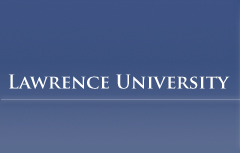
Selections from Special Collections
Files
Download Full Text (2.9 MB)
Description
With illustrations by H.K. Browne, xvi, 624 p. : front., 38 pl.
Some of the pages in this document were selected as part of a class project for Professor Garth Bond’s History of the Book seminar, Spring 2012. The abstract was prepared by Claire Griebler.
Publication Date
1853
Publisher
Bradbury and Evans
City
London
Keywords
Charles Dickens, 1812-1870 . ENG 527 History of the Book.
Rights
This work is in the public domain under United States Copyright Law. If you use any part of this work please include Lawrence University Special Collections in your citation.
Recommended Citation
Dickens, Charles, "Selected pages from Bleak House" (1853). Selections from Special Collections. 3.
https://lux.lawrence.edu/selections/3


Abstract
This illustration, titled "The Dancing School" can be found in chapter 14 of Bleak House. Dickens' text and Browne's illustration work together to portray and develop the character seen on the far right, Mr. Turveydrop. In Bleak House, Dickens describes Mr. Turveydrop by writing, "He was a fat old gentleman with a false complexion, false teeth, false whiskers, and a wig. He had a fur collar, and he had a padded breast to his coat, which only wanted a star or a broad blue ribbon to be complete…He stood poised on one leg, in a high-shouldered, round-elbowed state of elegance not to be surpassed" (Dickens 190). Dickens later writes, "At once to exhibit his Deportment to the best models, and to keep the best models constantly before himself, [Mr. Turveydrop] had found it necessary to frequent all public places of fashionable and lounging resort; to be seen at Brighton and elsewhere at fashionable times; and to lead an idle life in the very best clothes" (Dickens 193). By studying Dickens' text, it is clear that Mr. Turveydrop is self-absorbed; he is obsessed with perfecting his conduct and physical appearance. This character trait can also be seen in the illustration. In his analysis of this illustration in Dickens and Phiz, Michael Steig writes, "The most significant aspect of the characters' placement involves two mirrors, one at either end, on parallel walls. Into one a very small pupil on tiptoe is barely able to gaze and admire her little face; in the other the back of Mr. Turveydrop's ornately styled wig and his spotless collar are reflected…The plate comments upon Turveydrop's narcissism by paralleling him with the vain little girl" (Steig). The illustration is doing more than depicting a scene from the text; it is also working with the text in order to develop the character of Mr. Turveydrop.